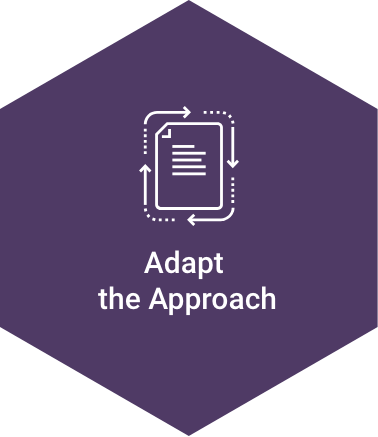- Estimate the Essential Elements of the Approach
-
Essential elements are the active ingredients assumed responsible for achieving intended outcomes. They are the WHAT, HOW, and WHO of policies, practices, and programs:
- WHAT should be delivered, such as key messages, design elements, and policy components
- HOW actions should be implemented, such as teaching methods
- WHO should implement, lead, or enforce actions
See how North Carolina retained the essential elements of their violence prevention approach by building communication capacity.
For examples of essential elements for different types of approaches, download:
Using Essential Elements to Select, Adapt, and Evaluate Violence Prevention Approaches
Worksheet 1. Estimating Essential Elements of Programs
Worksheet 2. Estimating Essential Elements of Community and Societal Approaches
Adaptation: Find the Policies, Practices, and Programs that Fit
- Adapt the Approach to Increase Fit while Keeping the Essential Elements
-
Adaptations should increase fit for the community while keeping the approach’s essential elements. Prior to implementation, you may consider adaptations to a policy, practice, or program. If the changes you make increase the fit but compromise, for example, key messages or implementation methods of an approach, you should not make the adaptations.
See how Houston, TX, adapted their approach to violence prevention.
Download the following worksheets for Programs and Community and Societal Approaches:
Worksheet 4. Planning Green Light Adaptations Worksheet 5. Making Green Light Adaptations and Avoiding Red Light Adaptations
- Track and Evaluate Adaptations
-
Document adaptations and measure whether they support essential elements and impact approach outcomes. Tracking and evaluating adaptations is important because findings can be used to improve approach delivery or explain approach outcomes. This is similar to process and outcome evaluation of violence prevention strategies and approaches. For this, go to Evaluation.
In some areas, little is known about effective policies, practices, or programs. In these communities, it may be best to innovate rather than adapt.
Download the following worksheet to help track and evaluate adaptations:




